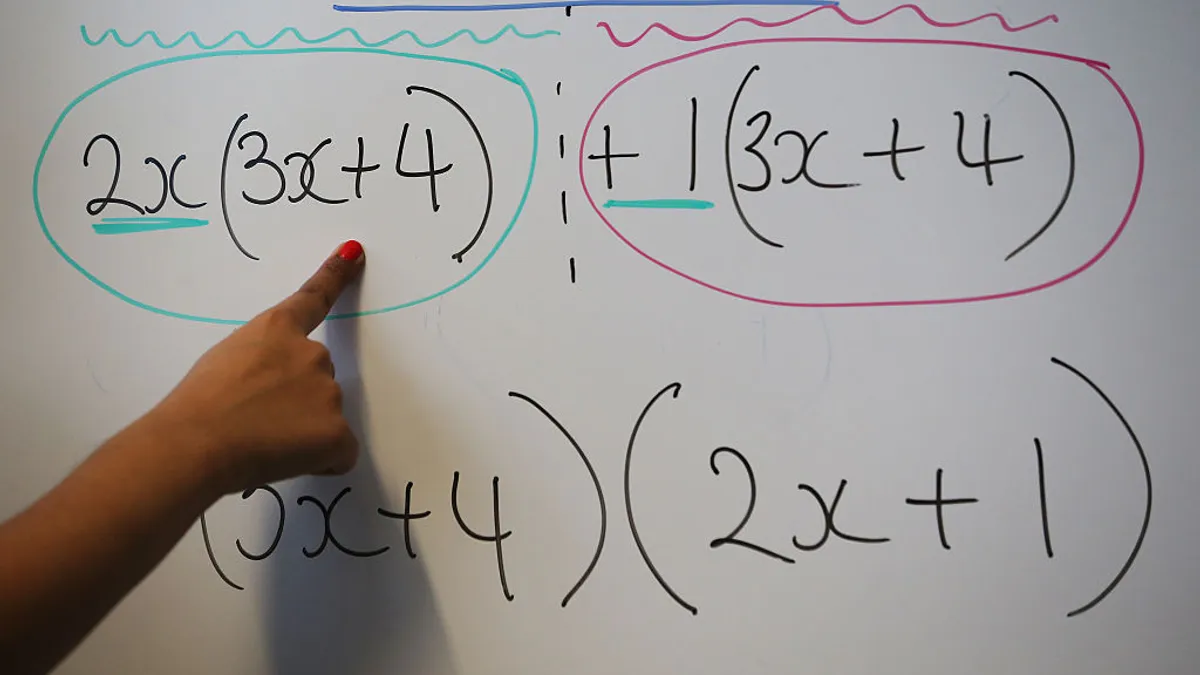Dive Brief:
-
Complex mathematics may prove daunting to students if they don’t understand why they’re learning the material or why it was developed. But knowing the history attached to discoveries like the Pythagorean theorem or game theory can help students connect to the relevance of what they’re studying.
-
A growing number of math teachers are starting to incorporate history to help students engage, said Kevin Dykema, president of the National Council of Teachers of Mathematics. He noted that math was developed by real people to solve real problems, and that revealing the actual problem-solving reason behind those discoveries may help students get excited about what they’re learning.
-
“It helps them recognize math was discovered by humans, and not a random set of facts to memorize,” Dykema said. “It can help them realize math is not just an ancient thing.”
Dive Insight:
While memorizing facts can be a necessity, asking classes to memorize the Pythagorean theorem or even to learn calculus equations may go down a bit sweeter if they understand the story of how — and why — these developments came to be.
Dykema said math is a discipline constantly being invented — more like the sciences as opposed to Latin, for example. Mathematicians are developing new theories regularly, and working through concepts from game theory to fractals, or repeating, non-ending patterns involved in training AI.
“People are developing mathematics to new circumstances today,” Dykema said. “We want students to recognize mathematics wasn’t just there but developed to answer questions.”
He warned, though, that as educators include historical examples of mathematicians and their theorems and discoveries, they should ensure these examples are diverse. For example, many women played significant roles in the history of the subject.
Ada Lovelace, a 19th-century mathematician and daughter of poet Lord Byron, is considered the mathematician who wrote the first computer program. Noether’s Theorem, which links symmetry and conservation of energy — and serves as a cornerstone of physics — was discovered by Emmy Noether.
At NASA, Valerie Thomas developed the illusion transmitter considered the backbone of 3D technology today, while Katherine Johnson’s work in orbital mechanics helped get John Glenn into orbit. And Chinese mathematician Mei-Ko Kwan suggested the concept of finding the shortest walk for a postman within a closed system or neighborhood — what an app like Waze does daily.
To help connect students to math through history, learners need to see themselves reflected in the examples teachers use during lessons, Dykema said.
“We have to be cautious of which historical things we are putting into the classroom,” Dykema said. “If we only include White male discoveries, we are doing them a disservice.”













